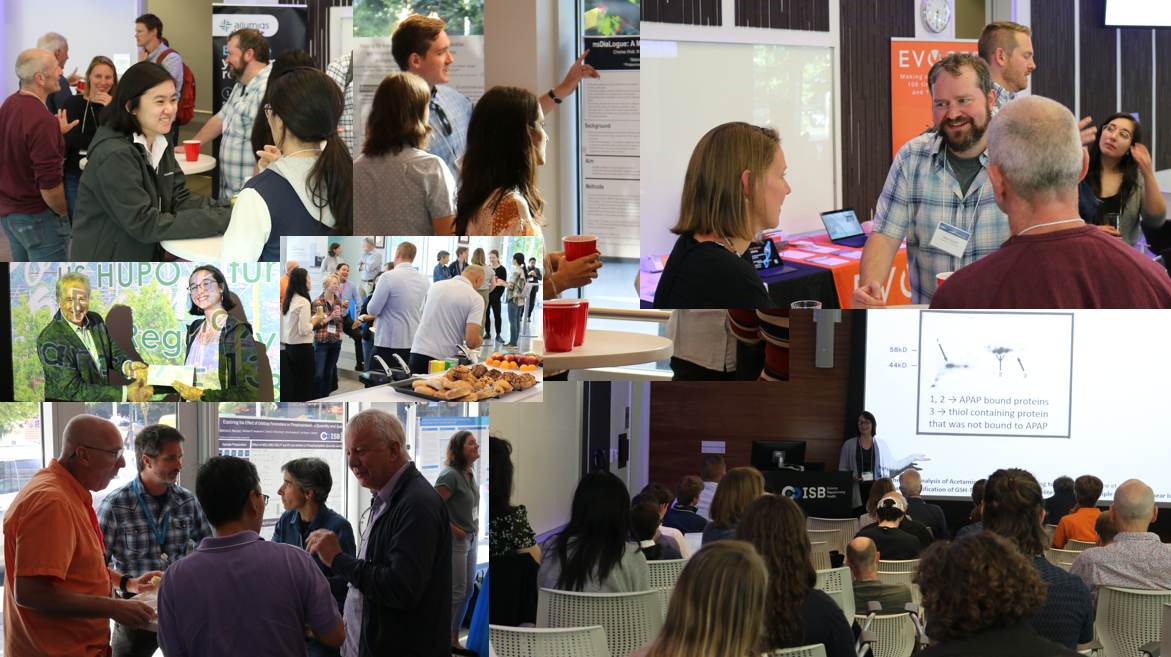Aaron Maurais (UW)
Proteomics Data Harmonization Between Labs, Platforms, and Workflows
Authors
Aaron J. Maurais (1), Gennifer E. Merrihew (1), Julia E. Robbins (1), Brian Connolly (1), Simona Colantonio (2), Joshua J. Reading (2), Joseph K. Knotts (2), Rhonda R. Roberts (2), Sandra S. Garcia-Buntley (3), Hongyan Ma (3), William Bocik (3), Jesse Stottlemyer (3), John Hamre (3), Eunkyung An (4), George E. Craft (5), Peter G. Hains (5), Roger R. Reddel (5), Phillip J. Robinson (5), Qing Zhong (5), Vincent Richard (6), Christoph Borchers (6-9), Kiminori Hori (10), Hiroki Shinchi (10), Koji Ueda (10), Hiroshi Nishida (11), Kosuke Ogata (11), Yasushi Ishihama (11), Kyu Jin Song (12-13), Jae-Won Oh (12-13), Kwang Pyo Kim (12-13), Hazara Begum Mohammad (14), Ye-Ji Do (14), Min-Sik Kim (14), Shinyeong Ju (15), Hankyul Lee (15),16, Cheolju Lee (15-16), Jingi Bae (17), Chaewon Kang (17), Sang-Won Lee (17), Ignasi Jarne (18-19), Joan Josep Bech-Serra (18-19), Tatiani Brenelli Lima (18-19), Carolina De La Torre (18-19), Lazaro Hiram Betancourt (20), Nicole Woldmar (20), Roger Appelqvist (21), Gyorgy Marko-Varga (21), Sandra Goetze (22-24), Bernd Wollscheid (22-23), Yi-Ju Chen (25), Hsiang-En Hsu (25), Hao Fang (25), Yu-Ju Chen (25), Yu-Tsun Lin (26), Kun-Yi Chien (26-27), Jau-Song Yu (26-28), Sara Ten Have (27), Angus Lamond (29), Nathan J. Edwards (30), Ana I. Robles (4), Henry Rodriguez (4), and Michael J. MacCoss (1)
Institutions
(1) Department of Genome Sciences, University of Washington, Seattle, Washington, United States. (2) Antibody Characterization Laboratory, Cancer Research Technology Program, Frederick National Laboratory for Cancer Research, Frederick, Maryland United States. (3) Proteomics Characterization Laboratory, Cancer Research Technology Program, Frederick National Laboratory for Cancer Research, Frederick, Maryland United States. (4) Office of Cancer Clinical Proteomics Research, Division of Cancer Treatment and Diagnosis, National Cancer Institute, National Institutes of Health, Rockville, Maryland 20850, United States. (5) ProCan, Children's Medical Research Institute, Faculty of Medicine and Health, The University of Sydney, Westmead, NSW, Australia. (6) Segal Cancer Proteomics Centre, Lady Davis Institute for Medical Research, Jewish General Hospital, Montréal, Quebec, Canada. (7) Division of Experimental Medicine, McGill University, Montréal, Quebec, Canada (8) Gerald Bronfman Department of Oncology, McGill University, Montréal, Quebec, Canada. (9) Department of Pathology, McGill University, Montréal, Quebec, Canada. (10) Cancer Proteomics Group, Cancer Precision Medicine Center, Japanese Foundation for Cancer Research, Tokyo, Japan. (11) Division of Medicinal Frontier Sciences, Graduate School of Pharmaceutical Sciences, Kyoto University, Kyoto, Japan. (12) Department of Applied Chemistry, Institute of Natural Science, Kyung Hee University, Yongin, Republic of Korea. (13) Department of Biomedical Science and Technology, Kyung Hee Medical Science Research Institute, Kyung Hee University, Seoul, Republic of Korea. (14) Department of New Biology, DGIST, Daegu, 42988, Republic of Korea. 15Chemical & Biological Integrative Research Center, Korea Institute of Science and Technology, Seoul, Republic of Korea. (16) Division of Bio-Medical Science & Technology, KIST School, University of Science and Technology, Seoul, Republic of Korea. (17) Department of Chemistry, Center for Proteogenome Research, Korea University, Seoul 136-701, Republic of Korea. (18) Proteomics Unit, Josep Carreras Leukaemia Research Institute (IJC), Badalona, Barcelona, Spain. (19) Josep Carreras Leukaemia Research Institute (IJC), Badalona, Barcelona, Spain (20) Department of Translational Medicine, Lund University, Skåne University Hospital Malmö, Sweden. (21) Department of Biomedical Engineering, Lund University, Lund, Sweden (22) Institute of Translational Medicine at the Department of Health Sciences and Technology, ETH, Zürich, Switzerland. (23) Swiss Institute of Bioinformatics, Lausanne, Switzerland. (24) ETH PHRT Swiss Multi-Omics Center (SMOC), Zürich, Switzerland (25) Institute of Chemistry, Academia Sinica, Taipei, Taiwan. (26) Molecular Medicine Research Center, Chang Gung University, Taoyuan Taiwan (27) Laboratory of Quantitative Proteomics, Division of Molecular, Cell, and Developmental Biology, School of Life Sciences, University of Dundee, Dundee, Scotland, UK (28) Department of Biochemistry and Molecular & Cellular Biology, Georgetown University, Washington, DC, USA.
Abstract
Quantitative proteomics is a powerful tool in both translational and basic biological research, however variability in sample preparation, instrumentation, and data acquisition can pose significant challenges when performing cross-laboratory comparisons. To demonstrate that proteomic data acquired in different laboratories can be leveraged in large-scale analyses, we coordinated a multi-site study where member labs of the International Cancer Proteogenome Consortium (ICPC), were sent aliquots of 9 different cell lysates. Each participating lab prepared and analyzed the samples using their own sample preparation and acquisition methods yielding a total of 22 distinct datasets. Our results demonstrate that median normalization combined with batch correction effectively reduces inter-lab variability and enables clustering by biological phenotype rather than technical origin. This work provides a framework for large-scale, cross-laboratory proteomics studies and highlights best practices for data harmonization in multi-site studies.





















